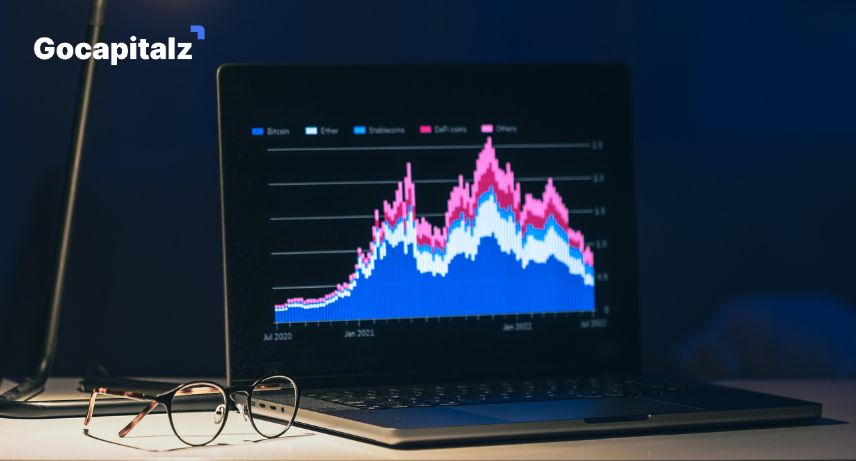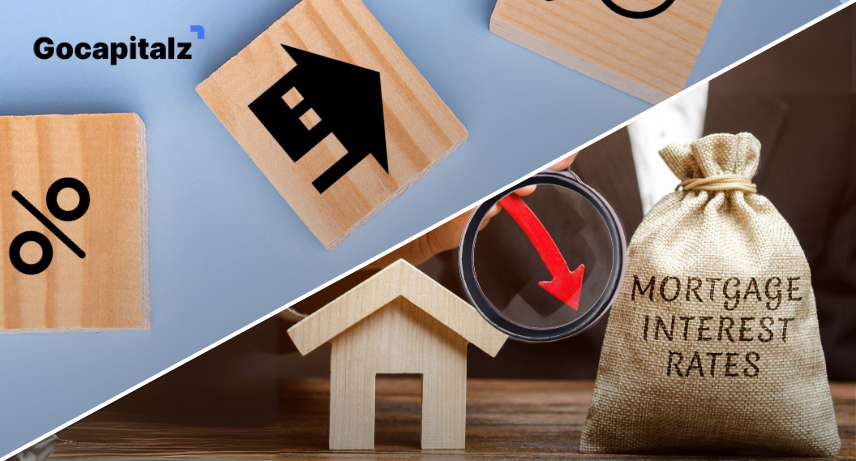Mastering Market Volatility: How Home Loan Interest Rates React to Change

Anyone wishing to succeed financially in 2025 needs to understand how economic movements may impact home loan interest rates. Because the Federal Reserve is careful about interest rate adjustments due to ongoing inflation and changes in the global economy, individuals trying to buy a home or invest must pay attention to the latest news.
How Home Loan Interest Rates Respond to Economic Uncertainty
Interest rates on home loans are set mainly by looking at inflation, yield on bonds and how monetary policies change. Analysis of recent data reveals that the 30-year fixed mortgage rate in the U.S. fell to 6.63% by mid-May from 7% in January 2025 (pbs.org). This decline offers some relief to borrowers; however, the overarching economic uncertainty necessitates a cautious approach.
Lenders regularly observe Federal Reserve actions because these influence the prime rate and, as a result, the rates on mortgages. Likewise, investor beliefs about the long-term economy are commonly shown in the rates offered for 15-year or 30-year fixed loans. If either inflation or unemployment increases above normal, there is a chance that home loan interest rates will rise as they once were.
Stock Market Fluctuations and Their Effect on Home Loan Interest Rates
Stock market volatility can indirectly impact home loan interest rates. In times of market changes, investors move toward bonds, which raises their price. Due to how closely mortgage rates follow bond yields, this can bring down mortgage rates (rocketmortgage.com). Still, different aspects influence this relationship, such as how investors feel and what is happening economically around the world.
Moreover, stock market fluctuations can signal broader economic distress. If the equity market does not perform well, central banks may opt for stimulus or interest rate changes to support more borrowing and investment. These efforts can hold the markets steady, but they sometimes bring about sudden changes in home loan rates.
Economic Uncertainty and Its Impact on Borrowing Costs
Economic uncertainty, characterized by factors such as geopolitical tensions and fluctuating inflation rates, plays a pivotal role in determining borrowing costs. A sudden surge of inflation can make central banks put off interest rate cuts, which means consumers have to continue paying more when they borrow. If the economy shows little or no sign of growth, the Fed may lower rates to help boost growth.
If the indicators show confusion or different results, lenders often decided to tighten credit. The result is that mortgage applicants now have to pass tougher rules, pay higher down payments and have their finances thoroughly checked. As a result, even with dropped average rates, not all borrowers can easily take advantage of them.
Also Read: Personal Loan Interest Rates: What You Need to Know
Top Risk Management Strategies for Homebuyers in Volatile Markets
In the face of market volatility, prospective homebuyers can employ several risk management strategies:
- When you rate lock, the interest rate on your mortgage is set before the lender finalizes your loan.
- A varied investment plan protects your funds from major financial drops and keeps them stable.
- An emergency fund gives you financial security so that you can handle unexpected changes in the economy.
You should prepare for your interest rate to go up or down after getting approved for your mortgage, if you have an adjustable rate loan. With a buffer in your budget, you won’t feel financial pressure when special offers finish.
Volatility Trading Strategies and Their Role in Rate Planning
Investors aiming to capitalize on market volatility can consider strategies such as options trading, which allows for potential gains in fluctuating markets. Using stop-loss orders will automatically sell your assets when they reach a price set by you. It’s essential to conduct thorough research and consult financial advisors before engaging in such volatility trading strategies.
Volatility trading strategies, while typically employed in equities and commodities, can also inform how financial advisors manage home loan planning. For example, looking at data from the derivatives market can help someone determine the best time to agree on a mortgage rate, given the rate’s changes.
Conclusion
In an environment marked by economic fluctuations and market volatility, understanding the dynamics of home loan interest rates is crucial for making informed financial decisions. Staying informed about stock market fluctuations, volatility trading strategies, and risk management techniques can equip you to navigate unpredictable rate movements with confidence.
GoCapitalz’s platform gives those seeking banking information a chance to compare mortgages from different banks in the United States.
FAQs
1. How do bond yields affect home loan interest rates?
If bond yields increase, mortgage rates usually rise, and if bond yields fall, mortgage rates usually fall as well.
2. Can stock market volatility lead to lower mortgage rates?
Yes, during stock market downturns, investors may flock to bonds, increasing their prices and lowering yields, which can result in decreased mortgage rates.
3. What is a rate lock, and how does it benefit homebuyers?
A rate lock locks in a fixed interest rate on your mortgage, given by the lender for a set time, and helps you avoid rising rates at that time.
4. Are there risks associated with volatility trading strategies?
Yes, while these strategies can offer potential gains, they also carry significant risks, including substantial financial losses. You should learn the market well and consider seeing a financial advisor before you take action.
5. How can economic uncertainty impact my mortgage application?
Economic uncertainty can lead to stricter lending criteria, fluctuating interest rates, and potential delays in loan approvals, affecting the overall mortgage application process.




